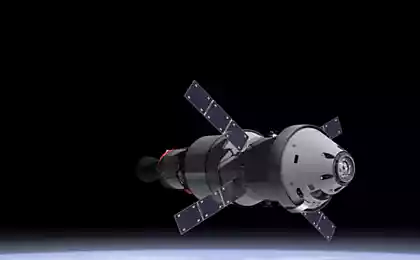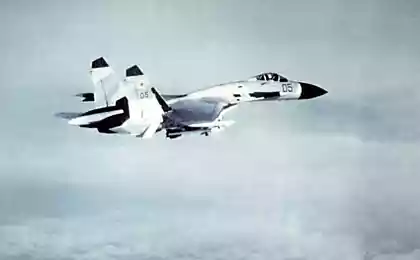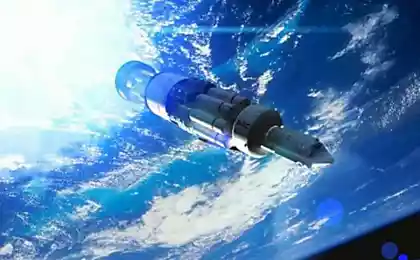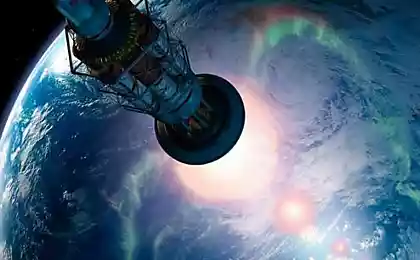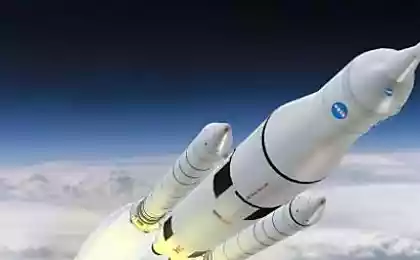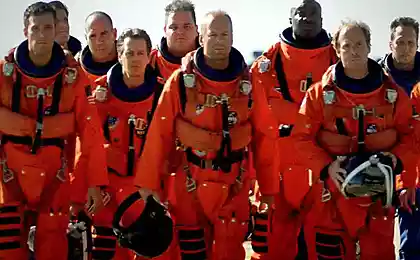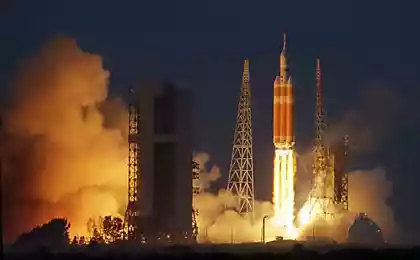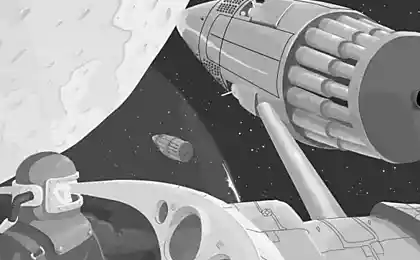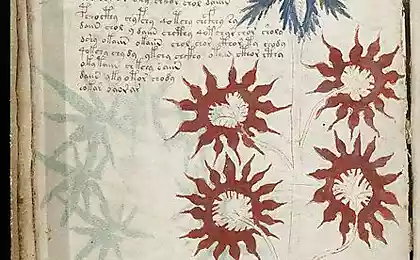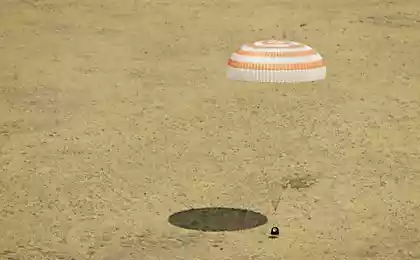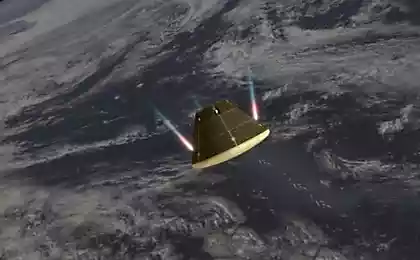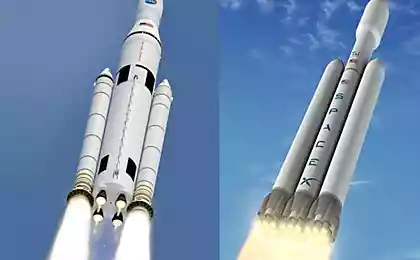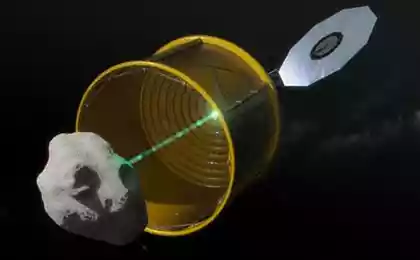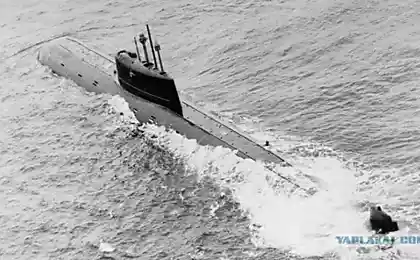1117
"Orion" (8 pics + text)
Orion - the project of manned rocket-cosmic impulse Korablin ("vzryvolёt") to study the interplanetary and interstellar space, developed in the US in 1950-60.
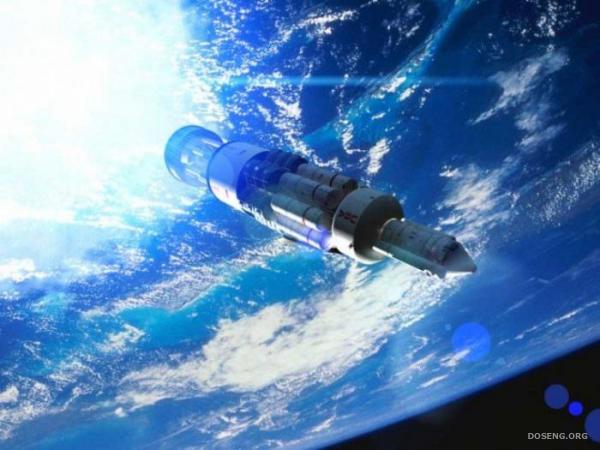
Engine Korablin "Orion" - a nuclear pulse, that is the basis of his work laid the use of energy of a nuclear explosion. Because of the spacecraft in the opposite direction of flight, emitted a small nuclear charge (0, 1 kt TNT equivalent) and a short (10-100 m) distance from Korablin made to undermine it. Some fission products flying toward Korablin reflected from the traction plate, forming a jet stream. Shock absorbers compensated connecting plate and pulling the ship itself.
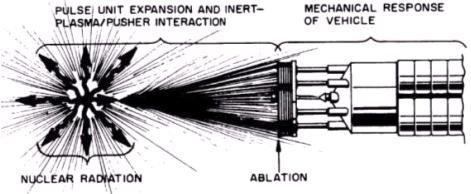
"Orion" consists of the following modules: propulsion module, propellant magazines and the payload section. These names can be translated as follows: propeller, fuel tanks, the payload bay. Propulsion consisted of traction plates, dampers and the main section containing about 900 nuclear warheads.
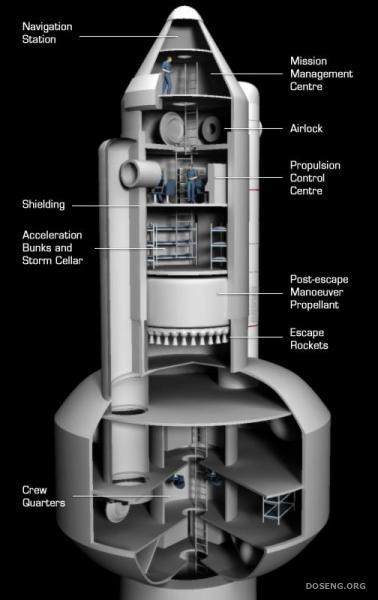
Initially, "Orion" was supposed to run from the Earth.
Such a ship could deliver thousands of tons into orbit a payload of hundreds of people. And it was possible to make a flight in comfort and not clamped tight-walled cabins on the first korablinh "East" and "Mercury". Of course, to put a ship on another planet would be very difficult, but it was possible to apply for a special landing Korablin.
Subsequently, as mentioned, it was decided to run "Orion" with one or two rockets "Saturn 5" in order to avoid contamination of the atmosphere of radioactive waste.
The expedition to the Red Planet was to be held as follows. In orbit going ship "Orion" in two parts delivered "Saturn-5." After the assembly takes place starting from the Earth's orbit and flight to Mars. Followed by access to an orbit around Mars. Korablin separated from the lander, which has a large aerodynamic efficiency, and performs controlled entry into the atmosphere. Planting should be done with the help of rocket engines. The crew conducts research, and then takes off in the rocket stage.
Currently, the project "Orion" is closed and not only developed, but is not considered as a space vehicle. At the end of the 60s, many prominent scientists, in particular, Eric Kraft, believed that it was a nuclear pulse rocket (also ships with thermonuclear engines) should ensure that the conquest of the solar system.
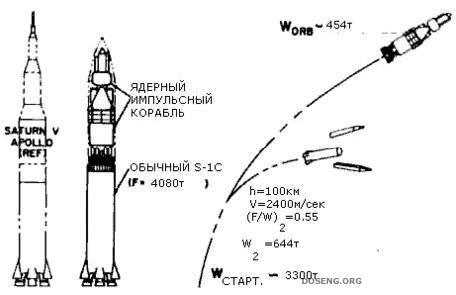
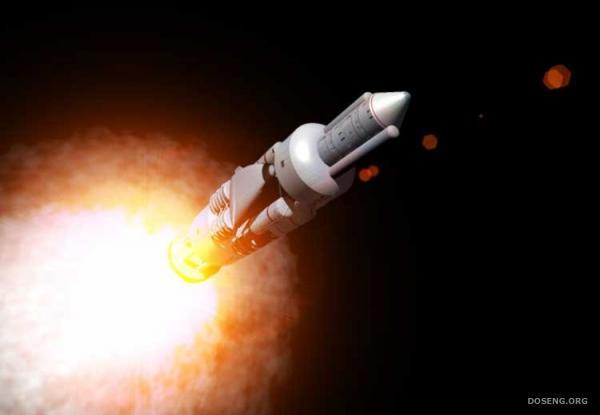
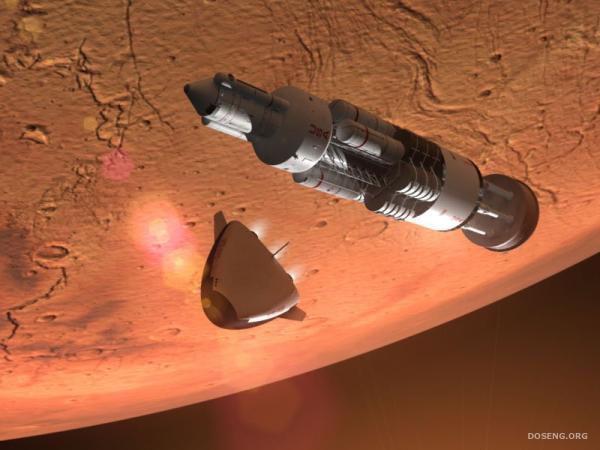
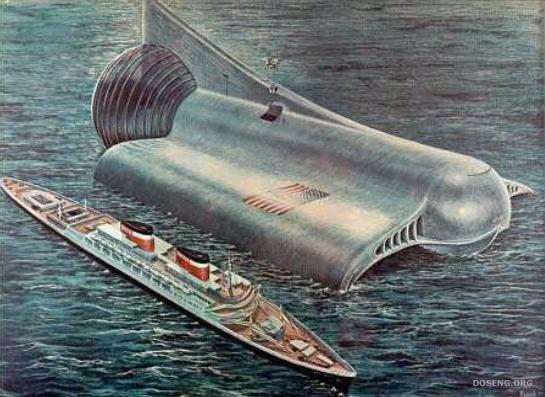


Engine Korablin "Orion" - a nuclear pulse, that is the basis of his work laid the use of energy of a nuclear explosion. Because of the spacecraft in the opposite direction of flight, emitted a small nuclear charge (0, 1 kt TNT equivalent) and a short (10-100 m) distance from Korablin made to undermine it. Some fission products flying toward Korablin reflected from the traction plate, forming a jet stream. Shock absorbers compensated connecting plate and pulling the ship itself.

"Orion" consists of the following modules: propulsion module, propellant magazines and the payload section. These names can be translated as follows: propeller, fuel tanks, the payload bay. Propulsion consisted of traction plates, dampers and the main section containing about 900 nuclear warheads.

Initially, "Orion" was supposed to run from the Earth.
Such a ship could deliver thousands of tons into orbit a payload of hundreds of people. And it was possible to make a flight in comfort and not clamped tight-walled cabins on the first korablinh "East" and "Mercury". Of course, to put a ship on another planet would be very difficult, but it was possible to apply for a special landing Korablin.
Subsequently, as mentioned, it was decided to run "Orion" with one or two rockets "Saturn 5" in order to avoid contamination of the atmosphere of radioactive waste.
The expedition to the Red Planet was to be held as follows. In orbit going ship "Orion" in two parts delivered "Saturn-5." After the assembly takes place starting from the Earth's orbit and flight to Mars. Followed by access to an orbit around Mars. Korablin separated from the lander, which has a large aerodynamic efficiency, and performs controlled entry into the atmosphere. Planting should be done with the help of rocket engines. The crew conducts research, and then takes off in the rocket stage.
Currently, the project "Orion" is closed and not only developed, but is not considered as a space vehicle. At the end of the 60s, many prominent scientists, in particular, Eric Kraft, believed that it was a nuclear pulse rocket (also ships with thermonuclear engines) should ensure that the conquest of the solar system.





